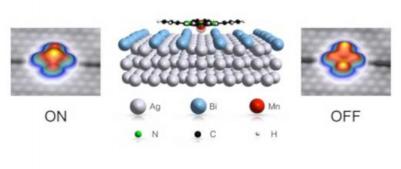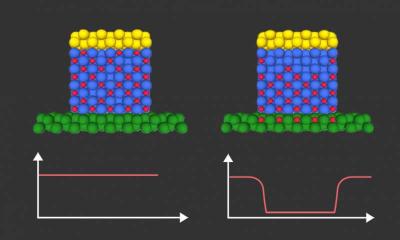Researchers create a molecular spintronics switch
Researchers from the University of Würzburg managed to create a molecular spintronics switch, using a manganese phthalocyanine molecule. The researchers succeeded in manipulating this molecule using a special deposit and an electrical field to permanently take on two different states.

This molecule cannot be normally switched, but the researchers managed to develop the switch by placing the molecule on metallic surface built from silver and bismuth atoms.
